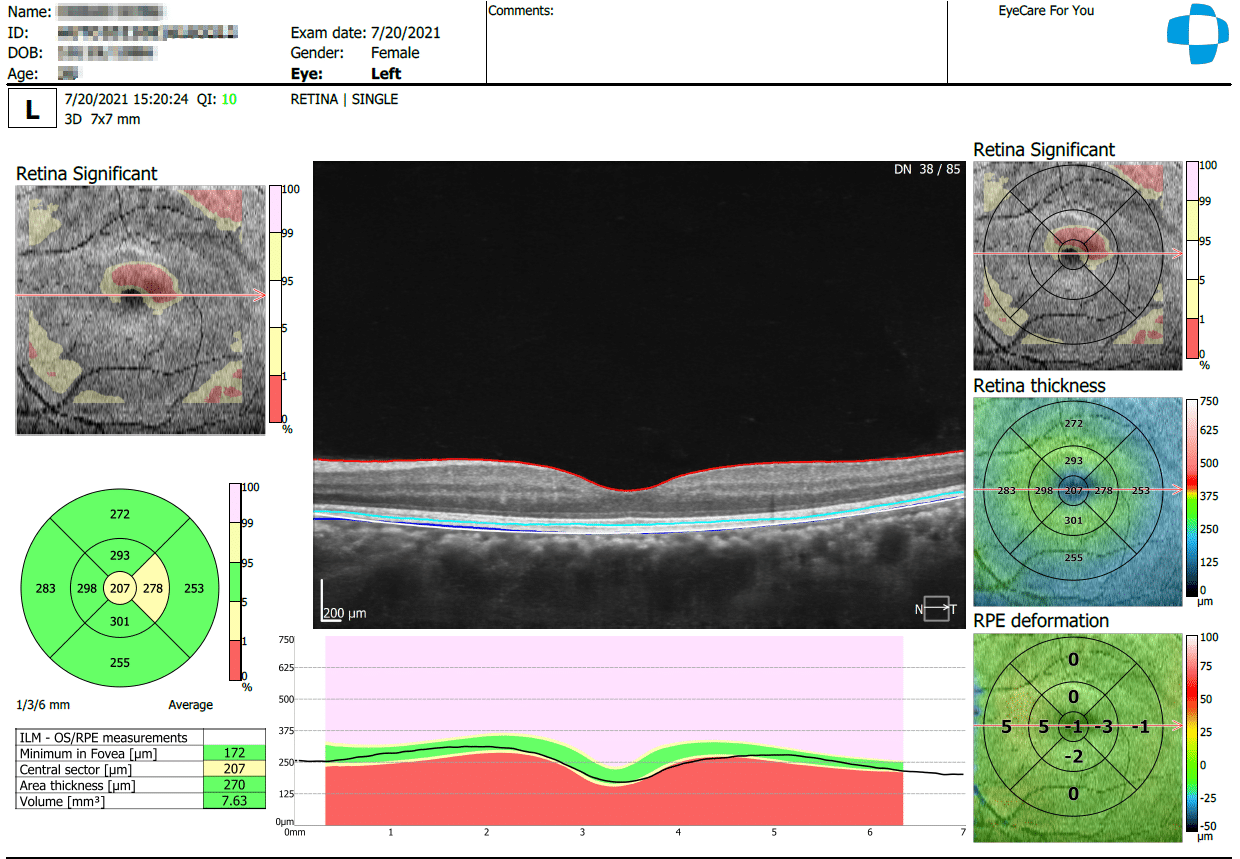We firmly believe that early detection is our best ally in treating any diseases and a simple and quick OCT scan is the best way to monitor the health of your retina.
What is an OCT examination?
Optical Coherence Tomography (OCT) is a non-invasive imaging technology that produces highly detailed 3D images of the retina. OCT is safe, does not cause any discomfort. It uses light waves only to produce a cross section images of your retina.
This exam only takes a few minutes. Nothing touches your eyes as you look into the machine and there are no puffs of air or flashes of bright light. Most of the time we can produce a clear scan with undilated pupils, but sometimes we may need to use eye drops to make your pupils larger due to smaller pupils or dense cataract formation.
These detailed scans allow our optometrists to assess the structure of your retina, optic nerve and macular and make detection of physical changes indicative of glaucoma, age-related macular degeneration and diabetic retinopathy earlier than other eye examination.
Some of the other disorders which can be detected by Optical coherence tomography to aid in their diagnosis are:
- Macular hole
- Macular pucker
- Macular edema
- Optic nerve swelling
- Central serous retinopathy
- Genetic eye conditions


When Should I Have an OCT Exam?
For people over the age of 50 we recommend two yearly. screening since this is the age group most at risk of diseases of the retina. Early detection is paramount to successful treatment of most disorders of the retina.
For those under the age of 50, we recommend an OCT exam as required based on the initial eye examination. However, if you have a family history of genetic eye disease or are experiencing any of the symptoms listed below, please call us or contact us through the website to book an appointment for an eye exam today.
- Difficulty seeing people’s faces
- Straight lines appear ‘wavy’ or ‘bent’
- Sudden deterioration of vision
- Seeing ‘dark’ or ’empty’ patches in the center of your vision
Scan sample on a normal healthy eye


